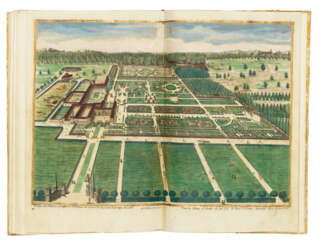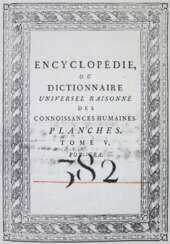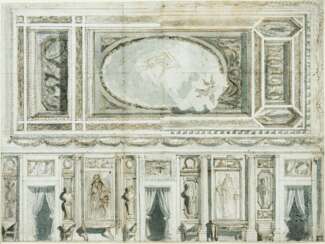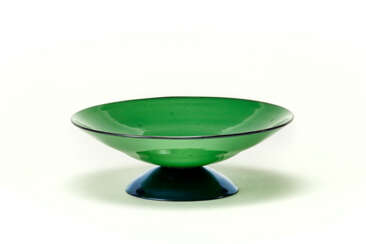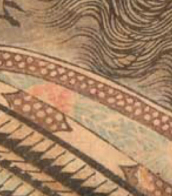de felice



Giovanni Battista Piranesi was an 18th-century Italian painter, engraver, architect, and archaeologist who represented Neoclassicism and Romanticism. He was famous for creating a lot of original etchings with images of antique architecture monuments.
Giovanni Piranesi created hundreds of drawings and drafts in which he depicted the reconstructed ruins of ancient Roman buildings. His works are still used as teaching aids in the education of architectural students in many prestigious European universities. Piranesi periodically printed voluminous books with dozens of his own engravings depicting modified ancient architectural masterpieces - "graphic fantasies". His works were in demand among professional architects, who borrowed Piranesi's original ideas for their designs.
The peak of Piranesi's career came in the 1760s when, in recognition of his merits, he became an honorary member of the Guild of St. Luke and received from the Pope the title of Knight of the Golden Spur.
More than 700 of the master's original etchings have survived, printed in scholarly works.




Pierre Subleyras was a French painter renowned for his work during the late Baroque and early Neoclassical periods, mainly active in Italy. Born on November 25, 1699, in Saint-Gilles-du-Gard, France, Pierre Subleyras moved to Rome in 1728 after winning the French Academy's grand prix, a scholarship that allowed him to study in the city. In Rome, he created several significant works, including "Christ's Visit to the House of Simon the Pharisee" and "The Mass of St. Basil," which are celebrated for their detailed depiction and emotional depth.
Pierre Subleyras's paintings were appreciated for their religious themes and portraiture, with his work "The Mass of Saint Basil" being one of his most famous pieces, showcasing his skill in depicting complex religious scenes with emotional resonance. The Metropolitan Museum of Art provides a detailed analysis of "The Mass of Saint Basil," highlighting its historical context and the technical aspects of Subleyras's painting style.
For collectors and experts in art and antiques, Pierre Subleyras's works offer a glimpse into the transition between the Baroque and Neoclassical periods, reflecting the cultural and artistic shifts of the 18th century. His paintings can be found in various prestigious museums, including the Louvre and the State Hermitage Museum.
To stay updated on news and events related to Pierre Subleyras and his works, consider subscribing for updates. This way, you'll receive notifications about new product sales and auction events featuring Pierre Subleyras's art, ensuring you don't miss out on opportunities to engage with the legacy of this influential painter.

Joseph Wright, styled Joseph Wright of Derby, was an English landscape and portrait painter. He has been acclaimed as "the first professional painter to express the spirit of the Industrial Revolution".
Wright is notable for his use of tenebrism, an exaggerated form of the better known chiaroscuro effect, which emphasizes the contrast of light and dark, and for his paintings of candle-lit subjects. His paintings of the birth of science out of alchemy, often based on the meetings of the Lunar Society of Birmingham, a group of scientists and industrialists living in the English Midlands, are a significant record of the struggle of science against religious values in the period known as the Age of Enlightenment.
Many of Wright's paintings and drawings are owned by Derby City Council, and are on display at the Derby Museum and Art Gallery.
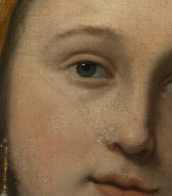

Carlo Scarpa was an Italian architect, influenced by the materials, landscape and the history of Venetian culture, and by Japan. Scarpa translated his interests in history, regionalism, invention, and the techniques of the artist and craftsman into ingenious glass and furniture design.


Abraham Lincoln was an American statesman and politician, the 16th President of the United States (March 4, 1861 - April 15, 1865).
The son of a frontiersman and a Kentucky farmer, Lincoln worked hard from an early age and struggled to learn. He was a militiaman in the Indian War, practiced law, and sat in the Illinois legislature for eight years. He was an opponent of slavery and gradually gained a national reputation that earned him victory in the 1860 presidential election.
After becoming the 16th president of the United States, Abraham Lincoln turned the Republican Party into a strong national organization. In addition, he drew most Northern Democrats to the Union side. On January 1, 1863, he issued the Emancipation Proclamation, which declared permanently free those slaves who were in Confederate territory. Lincoln considered secession illegal and was prepared to use force to defend federal law and the Union. Four more slave states joined the Confederacy, but four remained in the Union, and the Civil War of 1861-1865 began.
Lincoln personally directed the military action that led to victory over the Confederacy. Abraham Lincoln was reelected in 1864, and on April 14, 1865, he was fatally shot at Ford's Theatre in Washington, D.C. by actor John Wilkes Booth.
Abraham Lincoln is a national hero of the American people, he is considered one of the best and most famous presidents of the United States until today.





















